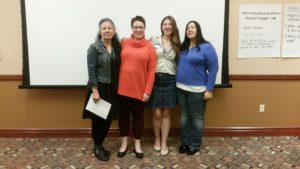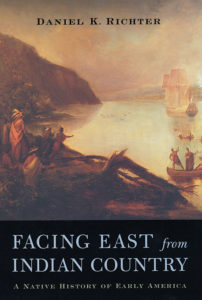Iowa Native Spaces
Last weekend I joined Jacki Rand (University of Iowa; Choctaw), Leah Slick-Driscoll (Meskwaki Settlement School; Meskwaki), and Mary Wise (University of Iowa

graduate student) in facilitating a professional development workshop for Iowa teachers, K-12. Part of the Iowa Native Spaces project being run by Jacki out of the University of Iowa, the workshop was an opportunity to bring teachers together on Meskwaki land to learn about the Native communities of Iowa, and begin to rethink the way Iowa history is taught in Iowa schools. We had teachers from every grade level there, and from disciplines we never expected, like math and computer science. It was an amazing weekend. I learned so much.
I came back from the workshop and set about revising my in-progress American history course to include American Indian people in almost every class period. I had a lot of American Indian history in there already, but this weekend smacked me in the face with the fact that “a lot” is not enough. The determined erasure of American Indian communities from American history is staggering. We’re socialized into believing that the story of America is about progress, and independence, and justice, and liberty, and that it’s inevitable that white people would rise to the top of the heap. But none of that is true, no matter how powerful a narrative myth it makes for the few.
We’re all standing on Native land. And yet so few schools, colleges, and universities teach Native history as vital to understanding the American past and present. The

history profession is deeply culpable in this – few graduate students who designate themselves Americanists study Native history, and programs do nothing to have students interact with the long history of the region in which they (however temporarily) live. That this ignorance is considered acceptable by anybody points to how deeply invested we are as a country in erasing Native people from the way in which we understand the world to work.
I asked the teachers last weekend to consider where they were situated when it came to teaching the American past. Did they stand in the east and look west, assuming history moved in that direction? Or did they plant their intellectual feet in the west and look toward the east, seeing the history of the United States as just one chapter in the long, long history of the continent on which they lived? (Gratitude to Daniel Richter for that question!)
The same question is resonant for me. Am I challenging me students to look east, or am I allowing them, like countless educators have done before me, to look west?
I’m recommitting to facing east from Indian country.